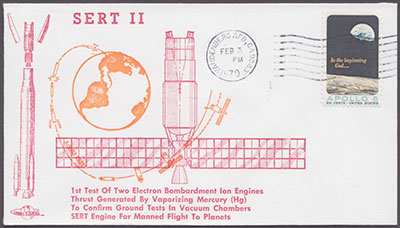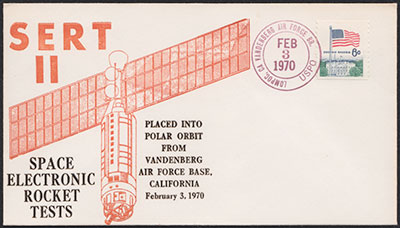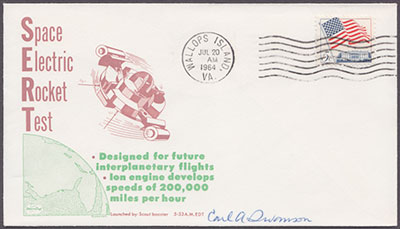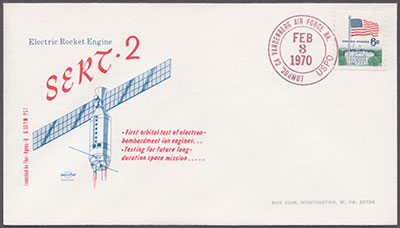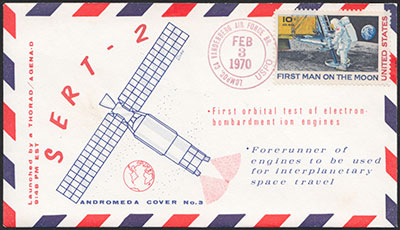Ken Havekotte
Member Posts: 4017
From: Merritt Island, Florida, Brevard
Registered: Mar 2001
|
 posted 10-16-2025 03:56 PM
posted 10-16-2025 03:56 PM
   
Has anyone seen an autograph space cover for the Space Electric Rocket Test (SERT) series of the mid-1960's to early 1970's?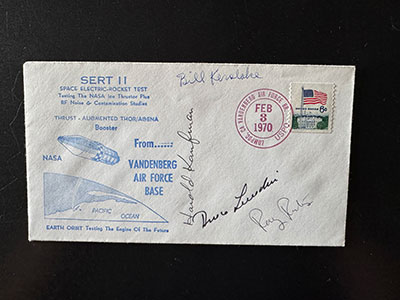 Depicted above is a launch day cover for SERT II on Feb. 3, 1970, from the then Vandenberg Air Force Base (now Vandenberg Space Force Station) on the seaside coast of California. The cover had been signed by Dr. Bruce Lundin, center director of NASA's Lewis Research Center in Cleveland, Ohio, now referred as NASA Glenn Research Center since March 1999 to honor astronaut pioneer John H. Glenn Jr. Three of the other signatures on the rubber stamp cachet cover are not too well known, however, they represent a genuine new space technology success story. You can see the autograph of Lewis' top project engineer, Harold Kaufman, in the middle of the cover. His first electron-bombardment ion thruster engine design was on SERT I in July 1964. Another prominent autograph is that of SERT's experiment manager William "Bill" Kerslake, developer of the ion thruster system at the top of the signed cover. The signature at bottom right is SERT II project manager Raymond "Ray" Rulis, who called the launch of SERT II the "smoothest operation I've seen." SERT II, launched by a Thor-Agena D rocket, was to test the long-term operation of an ion engine in space. Of the twin liquid-mercury fueled ion engines, both verified that new ion thruster technology could indeed operate for long durations in space without damaging other spacecraft systems and solar allays. Ion thruster propulsion is an electric propulsion system that uses electrostatic energy to accelerate ions to high speeds, creating trust for spacecraft. Unlike chemical rockets, ion energy produces very low thrust over long periods, making them ideal for deep space missions, orbit transfers, and attitude control. SERT II provided researchers with data for years beyond (until 1990) and was a rare example of an entire flown mission — including the launch, propulsion systems, spacecraft, and control center — all being handled by one organization: then NASA Lewis. On Feb. 14, 1970, NASA Lewis engineers and scientists activated SERT II's first ion thruster, beginning its six-month operational test period. Three weeks later, controllers shut the thruster down just before the vehicle passed through the path of a solar eclipse. It was restarted successfully afterwards and continued working later that same day. For another five months, SERT II operated without any issues until an electrical short disabled it. On July 22, 1970, the second thruster was started up having worked successfully for 14 weeks. The same polar orbiting spacecraft was reactivated in 1973 after flight controllers had fixed the electrical short from ion #1 that resulting in over 500 engine restarts during 18,000 hours before the propellant ran out in the spring of 1981. Providing data for decades helped in developing an array of rocket propulsion technologies, such as the NSTAR that powered the Deep Space and Dawn spacecrafts. In support of the agency's Artemis missions, NASA Glenn is now testing similar thrusters that will power Gateway, a future lunar space station. |













